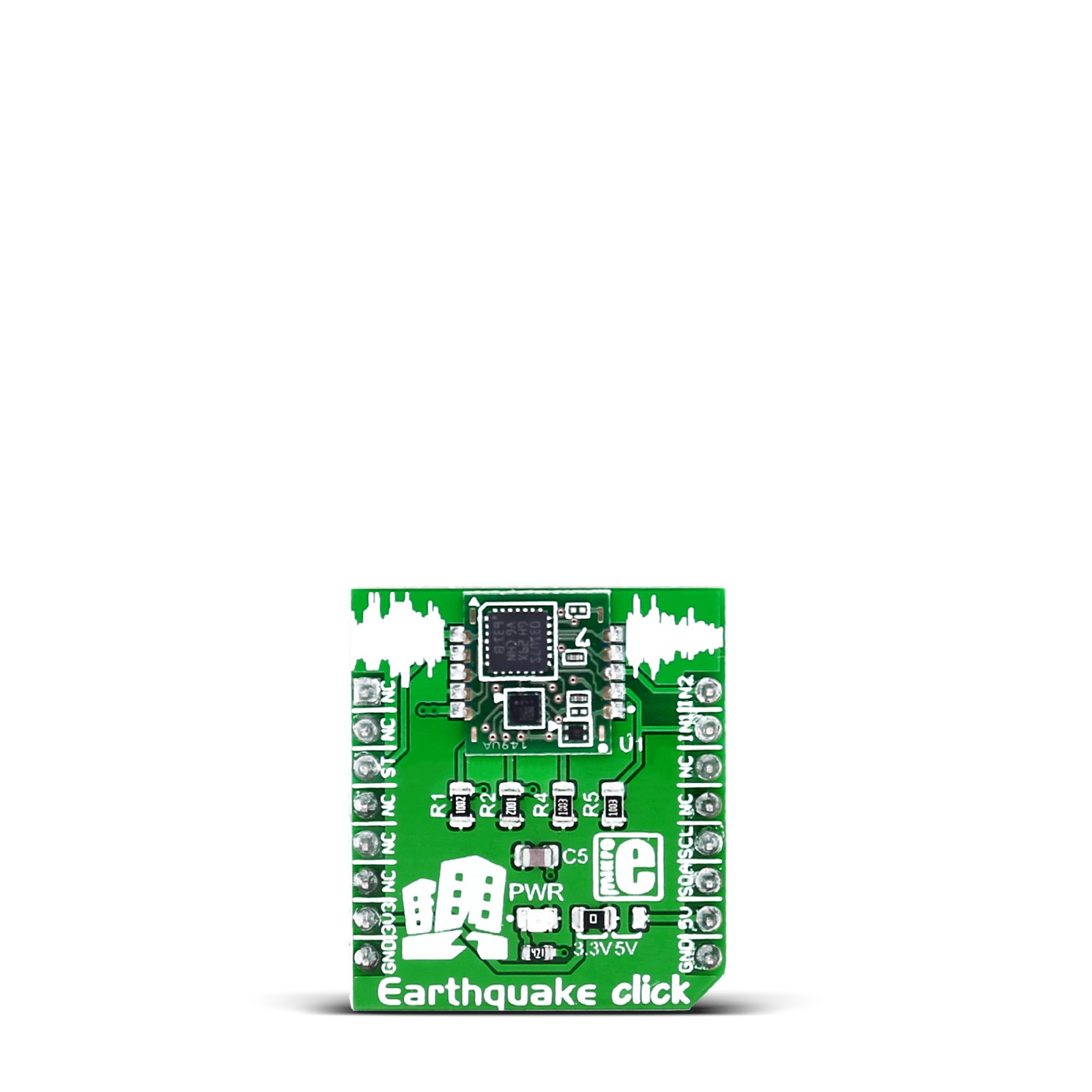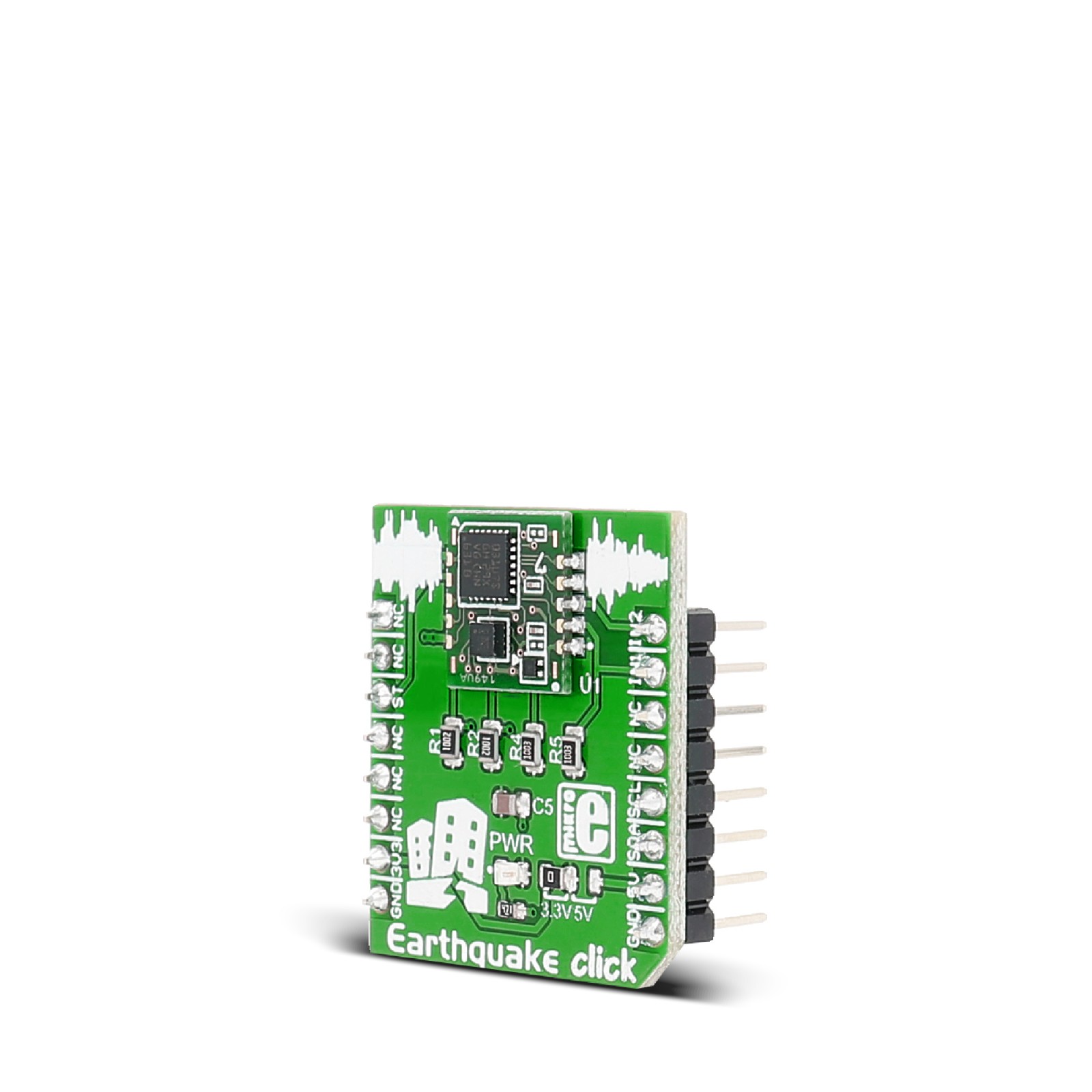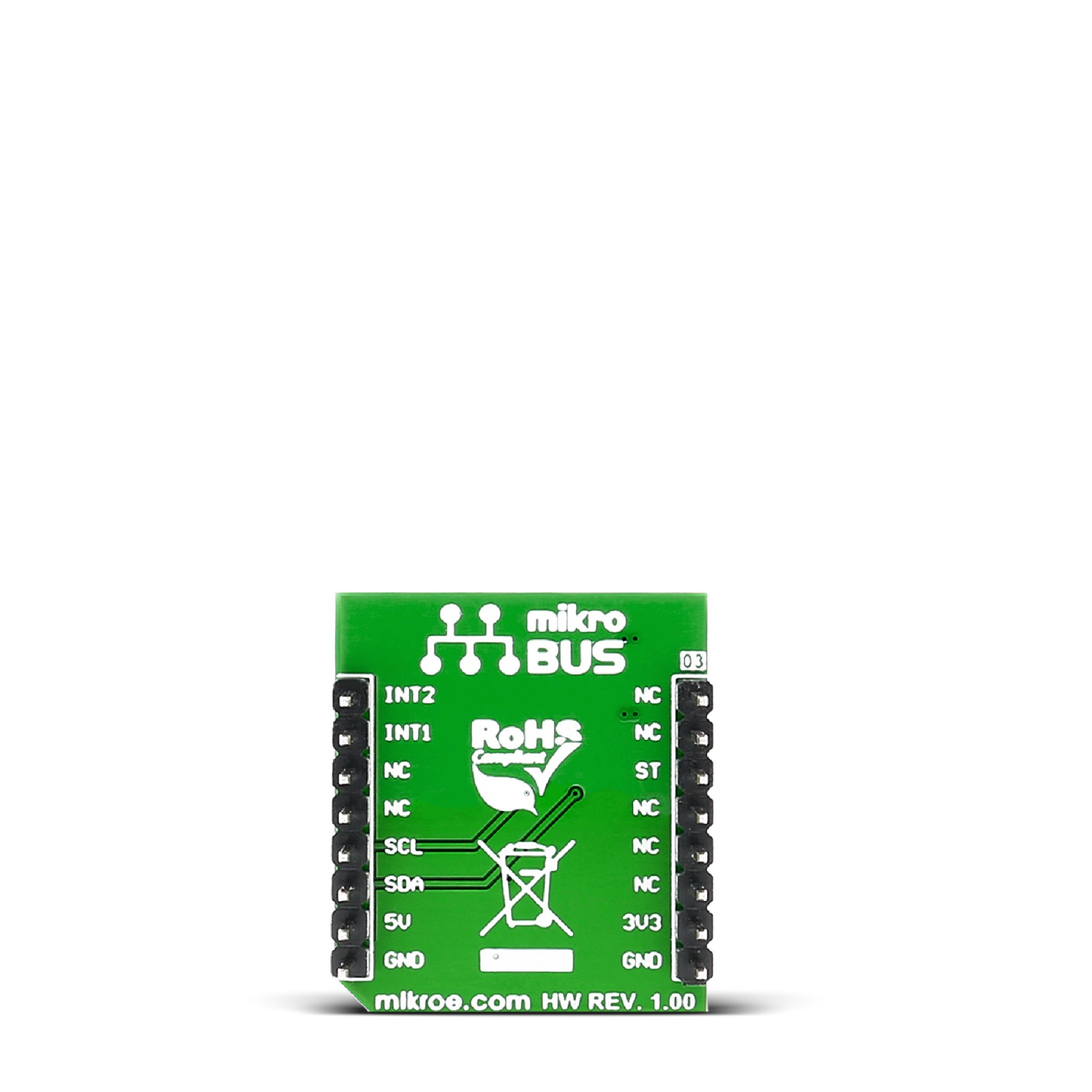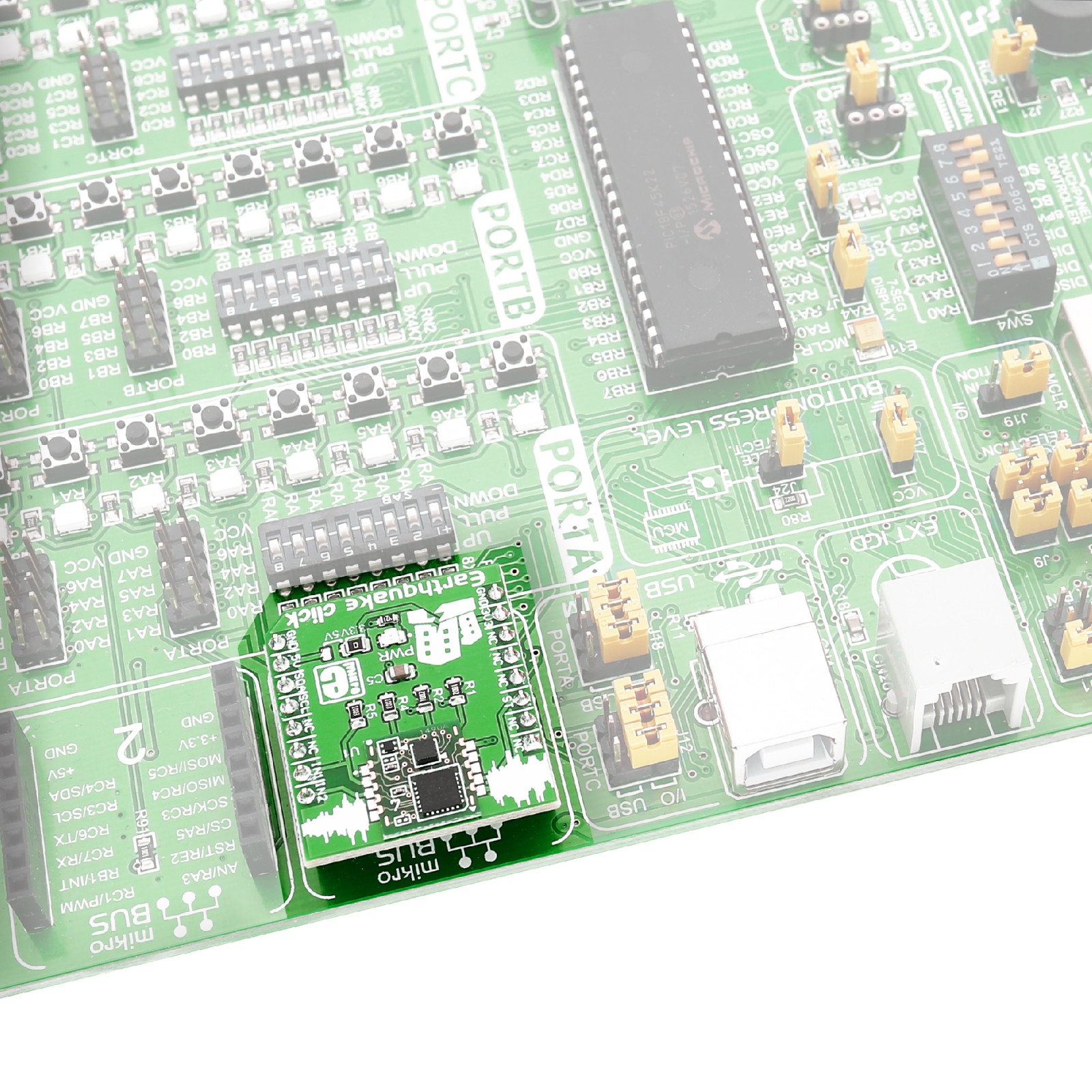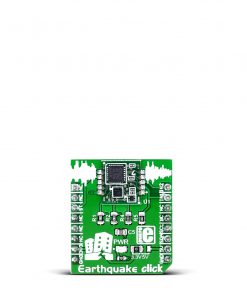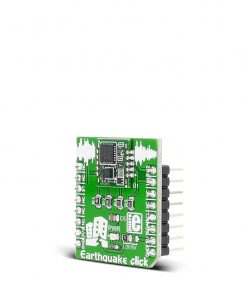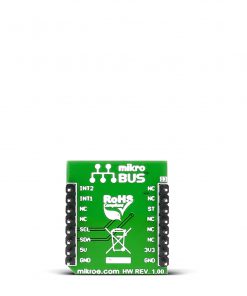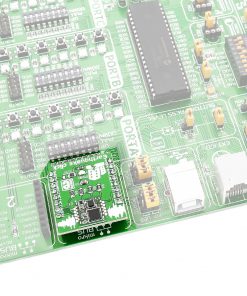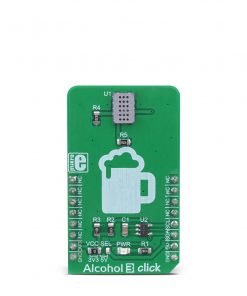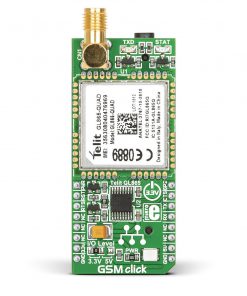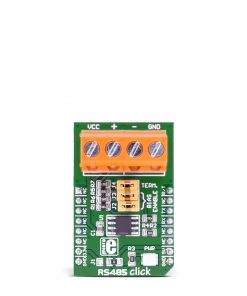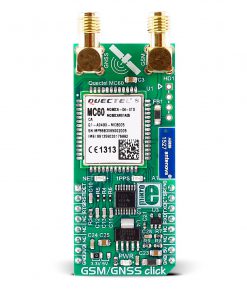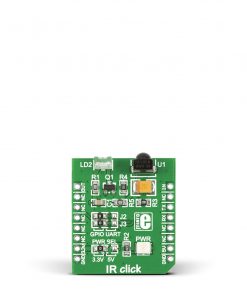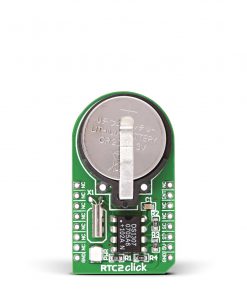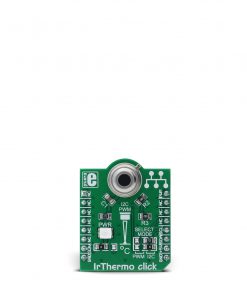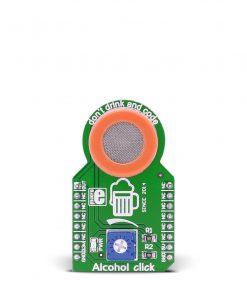Earthquake Click
R1,450.00 ex. VAT
Earthquake Click is a compact add-on board that detects seismic activities. This board features the D7S, the world’s smallest class-size high-precision seismic sensor from OMRON. It uses a three-axis acceleration sensor and Omron’s unique SI value calculation algorithm to determine the seismic intensity scale. The sensor is IoT-friendly because of its small size and, above all, low power consumption, which makes it ideal for prolonged operation on battery power. This Click board™ makes the perfect solution for the development of vibration sensors, fire prevention systems, electricity meters, gas meters, applications for chemical plants, bridges, tunnels, and more.
Earthquake Click is supported by a mikroSDK compliant library, which includes functions that simplify software development. This Click board™ comes as a fully tested product, ready to be used on a system equipped with the mikroBUS™ socket.
Stock: Lead-time applicable.
| 5+ | R1,377.50 |
| 10+ | R1,305.00 |
| 15+ | R1,232.50 |
| 20+ | R1,186.10 |

